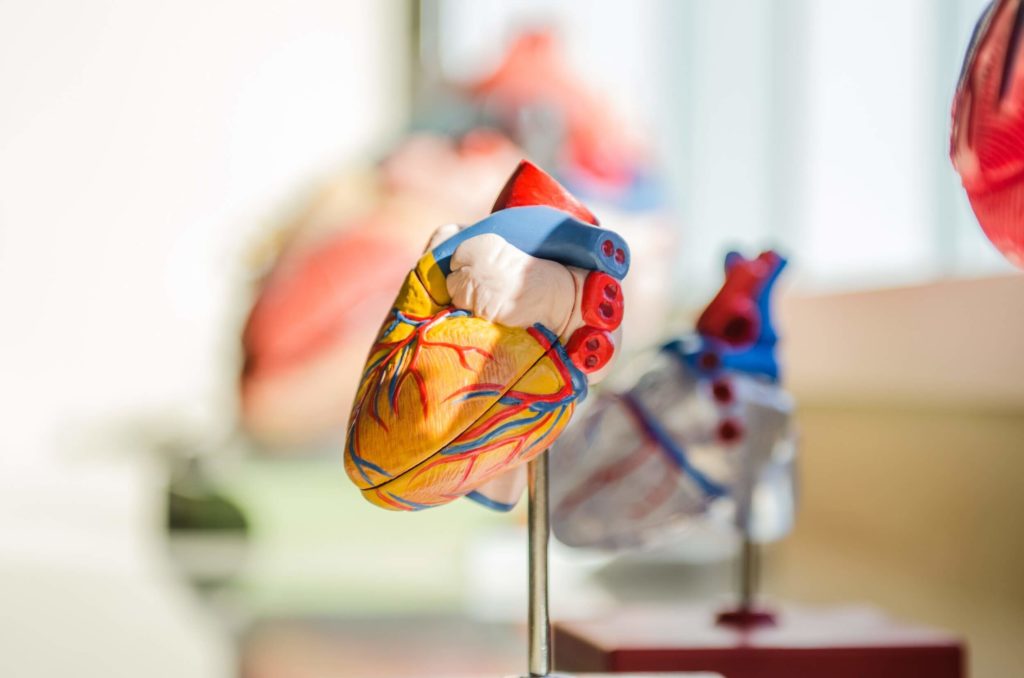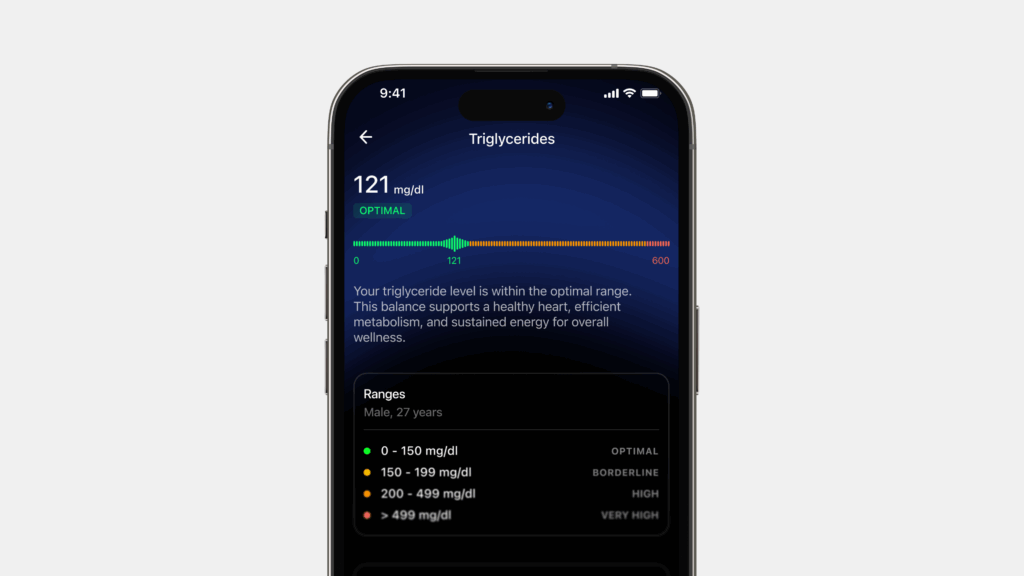Introduction
Over the course of an average lifetime, our heart beats about 2.5 billion times. Its continuous and tireless work makes it tremendously important for us to stay heart-healthy. The muscular pump, that is the heart, is responsible for blood circulation throughout the body. It comprises systemic circulation – to and from the body, and pulmonary circulation – to and from the lungs. It is also responsible for the removal of waste products of metabolism. (1) By extension, heart health is tied to metabolic health.
Heart health and metabolic health
If heart health is disregarded, it can lead to life-threatening conditions. A common reason for hearts to fail is a condition called atherosclerosis. Under it, there is formation of cholesterol-rich pockets in the arteries that prevent blood from flowing into the heart. The breaking of such pockets could also cause heart attacks and strokes. (1)
In a study published in the journal, Metabolic Syndrome and Related Disorders, metabolic health is defined as having ideal levels of blood sugar, triglycerides, high-density lipoprotein (HDL) cholesterol, blood pressure, and waist circumference, without using medications. Some biochemists consider metabolic health as the absence of metabolic disease. Within the field, its elements are considered to be (7):
- A low count of belly fat (visceral fat), this is the type of fat that is found around your organs,
- Blood pressure & sugar within a healthy range (without medication),
- Bones, joints, & muscles that allow physical activity,
- Steady appetite & energy levels.
Metabolic syndrome refers to a cluster of simultaneous conditions that raise your risk of heart disease, stroke and type 2 diabetes. These conditions include high blood pressure and blood sugar, surfeit body fat around the waist, and abnormal cholesterol or triglyceride levels. Individuals with metabolic syndrome are susceptible to cardiovascular disease and excessively high blood sugar compared with those who don’t have it. (14)
A measure of it can be arrived at after considering glucose, cholesterol, fatty acids, insulin, and inflammation among other measures. A 2019 study in Metabolic Health and Related Disorders, found only 12% of the studied population was considered metabolically healthy. (2)
What is insulin resistance?
To understand insulin resistance, one must first understand the role of insulin in our body. Insulin is the hormone secreted by the pancreas. It essentially helps sugar become fuel for our body and helps its absorption by cells. When insulin works, blood glucose levels operate in a reliably steady state. Insulin resistance occurs when one’s body inefficiently uses insulin, which makes it harder for sugar to move around to parts of the body that need it for energy production. When you have insulin resistance, your cells fail to respond to insulin and instead, resist its influence. This leads to a spike in blood glucose levels.(3)
How is heart health tied to insulin resistance?
High blood glucose can lead to inflammation that causes damage to the artery linings, consequently causing plaque formation in the arteries. People with abnormally high blood glucose also have a proclivity for dense LDL cholesterol that finds easy access into blood vessel walls and creates plaque. These walls then become thicker and are conducive to high blood pressure.(3)
Over time, such pockets of glucose hold the potential to evolve into conditions like diabetes. Insulin resistance can also lead to weight gain correlated with heart strain.(3) Insulin resistance causes a decrease in tissue response to insulin stimulation. It is characterized by defects in uptake and oxidation of glucose, a decrease in glycogen synthesis, and, to a lesser extent, the ability to inhibit lipid oxidation. During insulin resistance, several metabolic alterations prompt the development of cardiovascular disease. For instance, insulin resistance can lead to an imbalance in glucose metabolism that engenders chronic hyperglycemia, which in turn triggers oxidative stress {impaired balance between the production of reactive oxygen species (free radicals) and antioxidant defenses}, and causes an inflammatory response that leads to cell damage. Insulin resistance can also transform systemic lipid metabolism which then makes way for the development of dyslipidemia and the lipid triad: (1) elevated levels of plasma triglycerides, (2) declined levels of high-density lipoprotein, and (3) the manifestation of small low-density lipoproteins. This triad, along with endothelial dysfunction (a kind of non-obstructive coronary artery disease (CAD) in which there are no heart artery blockages, but the large blood vessels on the heart’s surface constrict instead of dilating) contribute to atherosclerotic plaque formation. If there is a buildup of plaque in one of your heart’s arteries that completely obstructs blood flow, it will lead to a heart attack. If one of the arteries to the brain gets clogged, it will cause a stroke.
If the heart is under strain, it can’t pump blood as well as it should. Fluid can accumulate in your legs leading to (peripheral arterial disease).
The poor health consequences of an untreated insulin resistance condition are an unpleasant list. It includes an increased risk of heart attacks and stroke. It can be a condition that leads to kidney disease, eyesight issues, or cancer. (4)
Some symptoms of insulin resistance include a fasting glucose level over 100 mg/dL, blood pressure readings of 130/80 or higher, HDL cholesterol levels under 40 mg/dL in men and 50 mg/dL in women, and waistlines over 40 inches in men and 35 inches in women. (4)
Insulin resistance and the related reductions in cardiological signals can factor in as causes for heart failure. Other factors include:
Oxidative stress: the imbalance between the making and storing of oxygen reactive species (ROS) and the ability of one’s body to detoxify such elements (10)
Hyperglycemia: the medical term for high blood sugar, which occurs when the body has too little insulin (11)
Hyperlipidemia: the presence of excess fats, lipids, or bad cholesterol in one’s blood. It increases artery blockages and can reduce blood flow. (12)
Activation of a sympathetic nervous system, or an increase in heart rate.
Insulin resistance is amplified by certain metabolic conditions. The combination can cause metabolic inflexibility or the body’s lack of adapting to the nutrients available to it. (13) It can contribute to mitochondrial dysfunction, or the cell’s inability to fuel one’s body adequately with energy. (6)

Stress plays a crucial role in this equation between insulin resistance and cardiac health. The perception of any threat on the body activates the flight or fight response via the HPA (hypothalamic–pituitary–adrenal) axis. This triggers the body to improve the availability of glucose in the blood to meet the energy requirements to cope with stress. There is enhanced mobilization of energy and reduced uptake of glucose by the muscles. More fuel can be mobilised in response to larger or chronic stress, through gluconeogenesis in the liver. Gluconeogenesis involves the generation of glucose from non-carbohydrate substrates.
The sympathetic nervous system directs the body’s response to danger. Stress evokes the sympathetic nervous system thereby producing cortisol (a stress hormone). Cortisol is the body’s natural alarm system which plays an important role in regulating blood pressure and blood sugar levels. In a stressful situation, cortisol causes increased glucose levels for an immediate energy source, inhibiting sensitivity to insulin production. Over time with chronic stress and chronically elevated glucose levels, the pancreas (which produces insulin to bring down glucose levels in the blood) loses the ability to respond to a high glucose stimulus, causing a reduction in the activity of insulin.
Chronic stress has been shown to raise the heart rate and blood pressure, making the heart work harder to generate the blood flow needed for bodily functions. Long-term elevations in blood pressure are harmful and can lead to myocardial infarction (heart attack), heart failure, abnormal heart rhythms, and stroke. Exposure of the heart to elevated levels of stress hormones (catecholamines including adrenaline) for a prolonged period can have damaging effects on vascular health. Stress can lead to increased oxygen demand on the body, spasm of the coronary (heart) blood vessels, and electrical instability in the heart’s conduction system.
Stress reduction, improvement in the quality of sleep, losing belly fat and consumption of omega 3 fatty acids that lower blood triglycerides can help to abate insulin resistance. Studies have also shown intermittent fasting to help with insulin sensitivity. (16)
How to measure heart health
Heart health can be measured in a variety of ways.
Resting heart rate (average heart beats per minute when the body is in a complete state of rest) is a reliable slice metric to indicate one’s cardiovascular health. The normal range for resting heart rate for adults is typically 60 to 100 beats per minute. (15)
Heart rate recovery measures the decrease in heart rate from its peak during the minute after peak exercise. Typically, 12-20 is a good range of heart rate recovery for healthy adults. According to studies, heart rate recovery amounting to less than five beats per minute has a strong correlation with cardiovascular disease. (4)
Heart rate variability (HRV) is the variation in the time interval between consecutive heartbeats in milliseconds. A normal HRV range for adults is typically 20 to over 200 milliseconds. (4)
FIT Treadmill score: A score over 100 for this metric strongly correlates with perfect cardiac health, However, most of us should be satisfied in the range between 0-100, indicating health. (4)
VO2 max: This measure of maximal oxygen uptake indicates the capacity for sustained athletic performance. In men aged 30 to 39, a score above 40.0 shares a strong correlation with perfect cardiac health. For adults, a score between 31.5-40.0 has a relation with general heart health. (4)
Markers of Heart Health
Cardiac troponin is one of the most prominent biomarkers of heart health. It exhibits the highest known sensitivity. Troponin enters into your bloodstream soon after a heart attack and stays there for days after all other biomarkers return to normal levels. Creatinine kinase (CK) can often at least double if one has suffered a heart attack. CK-MB rises 4 to 6 hours after a heart attack. But it usually returns to normal in a day or two. Myoglobin is a small protein that stores oxygen and is assessed occasionally.
Markers of Metabolic Health
Waist circumference – For men, a waist circumference greater than 40 inches would be considered a risk factor of metabolic disease, and for women, it’s 35 inches.
Blood Sugar Levels – A fasting blood glucose of less than 100 mg/dL is widely held as ‘normal,’ but most functional doctors favour the figure to be at around 70 or 80 mg/dL.
Triglycerides – Triglycerides are the end product of digesting and breaking down fats in food. A level over 150 is generally indicative of metabolic disease.
LDL – The desired LDL level would be Less than 70 mg/dL for those with heart or blood vessel disease and for other patients at very high risk of heart disease (those with metabolic syndrome), less than 100 mg/dL for high risk patients (for example some patients who have diabetes or multiple heart disease risk factors) and less than 130 mg/dL otherwise.
Blood Pressure: 130/85 is considered the blood pressure threshold for metabolic syndrome.
Keeping track of one’s heart and metabolic metrics can help to gauge one’s heart health.
Keeping your heart healthy
To maintain heart health, one must prevent metabolic syndrome. The advice has remained consistent and plain over time. It may even sound too familiar. It involves moderate exercise movement, at least 30 minutes of it for 5 days a week. Physical activity also improves insulin sensitivity. Both aerobic and resistance training can elevate insulin sensitivity, a combination of both in your workout routine can be effective.
Stress reduction with meditation, conscious breathing that activates the parasympathetic nervous system and quality sleep can help increase insulin sensitivity.
Excess weight in the mid-segment of the body reduces insulin sensitivity. Weight loss may help to amp up insulin sensitivity and is linked to a lower risk of diabetes.
Soluble fibre feeds the favourable gut bacteria and increases insulin sensitivity.
A diet with plenty of vegetables, nuts, beans, fish, legumes, and lean protein is prescribed. A diet rich in plant compounds can aid in raising insulin sensitivity.
One should be within a weight range that can be considered healthy by medical standards. This can vary from person to person based on age, gender, and other demographic, genetic, or personal factors. Talking to one’s doctor to arrive at these is the best course of action. (5)
Conclusion
Cardiovascular diseases are the dominant cause of mortality in insulin-resistant individuals. Heart health is intimately tied to metabolic health. The actions that help improve metabolic health metrics can also improve heart health metrics. Regular aerobic and resistance training, good quality of nutrition, stress reduction and good sleep have incremental benefits in improving insulin resistance and heart health. Regularly monitoring your metabolic and heart health can give you actionable insights to improve your holistic wellbeing.
References
- https://www.health.harvard.edu/topics/heart-health
- https://www.liebertpub.com/doi/10.1089/met.2018.0105
- https://www.webmd.com/diabetes/insulin-resistance-heart
- https://www.webmd.com/diabetes/insulin-resistance-syndrome
- https://www.forbes.com/sites/shourjyasanyal/2019/01/31/5-quick-metrics-to-measure-your-heart-health/?sh=4e68ecf77195







